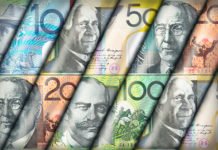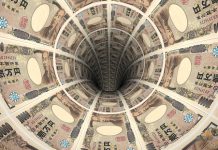Markets
Spanish (headline) inflation unexpectedly ended a 5-month run of decline (5.8% Y/Y from 5.7% Y/Y) while core inflation accelerated to a new high (7.5% Y/Y from 7% Y/Y). Belgian fell from 10.35% Y/Y to 8.05% Y/Y with lower energy and natural gas prices the sole driver. All underlying inflation gauges (core, services, food,…) continued their uptrend. Both releases set the tone for EMU numbers due on Wednesday and for the ECB meeting on Thursday. French CPI figures will be released, but don’t look for the German ones. They are postponed because of base year changes. Anyway, German Bunds sold off on the inflation outcome, underperforming US Treasuries. German yields rose by 4.9 bps (30-yr) to 10 bps (2-yr). 10-yr yield spreads vs Germany widened by up to 3 bps. US yields added 3.1 bps to 5.1 bps with the belly of the curve underperforming the wings. Towards the end of the US session, the US Treasury updated its quarterly borrowing estimates. They raised the estimate for federal borrowing for the current quarter by a whopping $353bn compared with late October, to $932bn. A lower cash balance at the start of the year, combined with projections for lower tax receipts and bigger spending explain the update. The Treasury kept its cash-balance estimate for the end of March unchanged at $500bn ($570bn currently). For Q2, the Treasury pencils in $278bn of net borrowing. All estimates assume that Congress will raise or suspend the federal debt limit. On Wednesday, the Treasury will announce plans for refunding of longer-term securities. Risk sentiment proved fragile already in European trading and deteriorated during US dealings. Main indices lost 0.75% (Dow) to 2% (Nasdaq). The dollar reacted to the change in mood with EUR/USD dropping from the upper end of last week’s trading range (1.0920) towards the lower end (1.0840). Interestingly: core bonds held near the intraday lows even if oil prices slid as well.
The IMF this morning updated its growth forecasts. Compared with October, it now expects global growth to reach 3.2% by the end of the year (compared to end 2022; up from 2.7%). The chief economist said that 2023 could well present a turning point with economic conditions improving. It marks a stark contrast with previous IMF warnings that a third of the world would enter a recession. Falling energy prices and the opening up of the Chinese economy are the main drivers. On a country level, only the UK is set for contraction this year. The IMF suggested upward risks to inflation which would keep monetary policy tighter than currently discounted by markets. Today’s beheaded eco calendar still contains French CPI data, Q4 EMU GDP numbers, US Chicago PMI and consumer confidence. We expect yesterday’s trading dynamics to remain at play.
News and views
Australian retail turnover surprisingly dropped 3.9% M/M in December, coming after a 1.7% rise in November. It was the first negative reading after 11 consecutive rises. Retail turnover remains elevated overall as it holds at the sixth highest level in the series and was 7.5% higher through the year. Changes in seasonal patterns around Black Friday played a role in monthly dynamics. Even so, the fall suggests retail spending is slowing due to high cost-of-living pressures. Department stores had the largest fall (-14.3%), followed by clothing, footwear and personal accessory retailing (-13.1%), household goods retailing (-7.8%) and other retailing (-4.6%). Food retailing was the only industry to record a rise (+0.3%). Given the impact of technical issues (seasonal adjustment), RBA policy won’t be derailed, especially after higher than expected inflation (7.8% Y/Y) reported earlier this month. The Australian 2-y yield declines only -1 bp. AUD/USD eases to 0.704, but this mainly mirrors a global USD rebound.
Chinese activity rebounded sharply in January as the economy reopened after lifting Covid restrictions. The overall composite PMI returned north of the 50 boom-or bust level, from 42;6 to 52.9. The index was in contraction territory during the three previous months. Activity in the manufacturing sector improved as expected, from 47.0 to 50.1. The non-manufacturing sector (including services and construction) showed an impressive rebound up from 41.6 to 54.4. The recovery was mainly driven by domestic demand. Also expectations for business activity jumped sharply, both for manufacturing and non-manufacturing. Export orders/external demand remains in contraction territory. The yuan this morning trades little changed against a broadly strong dollar (currency USD/CNY 6.75).













